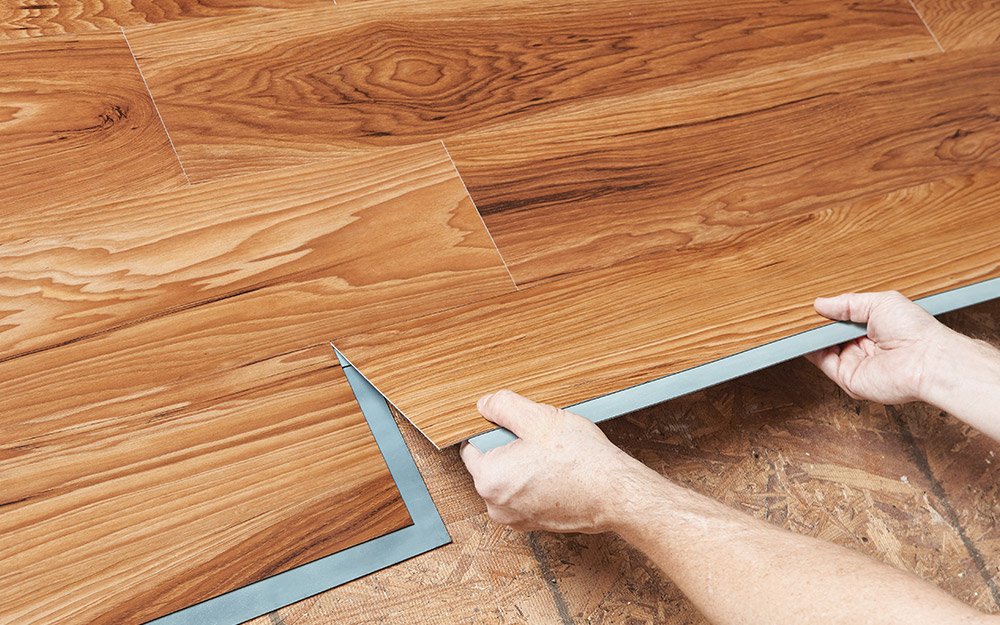Vinyl plank flooring has become a popular flooring solution for homeowners in recent years. It is a durable and stylish option that can mimic the look of natural wood, stone, and other materials. Vinyl plank flooring is also easy to install and maintain, making it an ideal choice for busy households. In this article, we will discuss everything you need to know about vinyl plank flooring, from its benefits and drawbacks to the installation process.
What is Vinyl Plank Flooring?
Vinyl plank flooring is a type of flooring that is made from PVC, or polyvinyl chloride. It is a synthetic material that is designed to look like real wood or stone, but without the high price tag or maintenance requirements. Vinyl plank flooring comes in a variety of styles, colours, and textures, making it easy to find the perfect match for any decor.
Benefits of Vinyl Plank Flooring
There are several benefits to choosing vinyl plank flooring for your home. Here are some of the most significant advantages:
- Durability: Vinyl plank flooring is incredibly durable and can withstand heavy foot traffic, spills, and stains. It is also resistant to scratches and dents, making it an ideal option for households with children and pets.
- Easy Maintenance: Vinyl plank flooring is easy to clean and maintain. It can be swept, vacuumed, or mopped regularly to keep it looking new. It is also resistant to moisture, making it a suitable option for kitchens, bathrooms, and other high-moisture areas.
- Affordability: Vinyl plank flooring is an affordable alternative to hardwood, stone, and other natural materials. It can mimic the look of these materials without the high price tag, making it an ideal option for budget-conscious homeowners.
- Versatility: Vinyl plank flooring comes in a variety of styles, colours, and textures, making it easy to find the perfect match for any décor. It can also be installed in any room of the home, including high-moisture areas like bathrooms and basements.
Drawbacks of Vinyl Plank Flooring
While vinyl plank flooring has several benefits, it is not without its drawbacks. Here are some of the most significant disadvantages:
- VOCs: Some vinyl plank flooring products may emit volatile organic compounds (VOCs), which can be harmful to human health. To avoid this issue, look for products that are low-VOC or have Green Guard certification.
- Not Eco-Friendly: Vinyl plank flooring is not an eco-friendly option since it is made from synthetic materials that do not biodegrade. If you are looking for an eco-friendly flooring solution, consider bamboo, cork, or reclaimed hardwood instead.
- Can’t be Refinished: Unlike hardwood, vinyl plank flooring cannot be sanded and refinished if it becomes damaged or worn. It will need to be replaced entirely.
Vinyl Flooring Installation
If you decide to install vinyl plank flooring in your home, it is essential to know the installation process. Here is a step-by-step guide to installing vinyl plank flooring:
- Prepare the Subfloor: The first step in installing vinyl plank flooring is to prepare the subfloor. The subfloor should be clean, dry, and level. Remove any debris or adhesive residue from the subfloor and use a levelling compound to smooth out any uneven areas.
- Measure and Cut: Measure the length and width of the room and calculate how many vinyl planks you will need. Cut the planks to size using a utility knife or vinyl cutter.
- Install the First Row: Start by laying the first row of vinyl planks along the longest wall in the room. Leave a 14-inch gap between the planks and the wall to allow for expansion.
- Install the Remaining Rows: Install the remaining rows of vinyl planks, locking them together using the tongue-and-groove system. Be sure to stagger the planks so that the seams do not line up.
- Cut Around Obstacles: If you encounter obstacles like pipes or corners, use a template to cut the vinyl planks to fit around them.
- Install Trim: Once the laminate flooring is installed, install trim around the perimeter of the room to cover the expansion gap.
Tips for Installing Vinyl Plank Flooring
Here are some tips to make the installation process go smoothly:
- Acclimatise the Planks: Before installing the vinyl planks, allow them to acclimatise to the room’s temperature and humidity for at least 48 hours.
- Use a Moisture Barrier: If installing vinyl plank flooring over a concrete subfloor, use a moisture barrier to prevent moisture from seeping into the planks.
- Use the Right Tools: Use a utility knife, vinyl cutter, and a tapping block to ensure a precise and secure installation.
- Follow Manufacturer Instructions: Follow the manufacturer’s instructions for installation, including the recommended subfloor preparation and installation methods.
Conclusion
Vinyl plank flooring is a durable, stylish, and affordable flooring solution for any home. It is easy to install and maintain, making it an ideal option for busy households. While it has some drawbacks, such as not being eco-friendly and emitting VOCs, the benefits outweigh them. If you are considering vinyl plank flooring for your home, be sure to follow the manufacturer’s instructions for installation and use the right tools. With proper installation and maintenance, vinyl plank flooring can last for many years and provide a beautiful, low-maintenance flooring option for your home.




